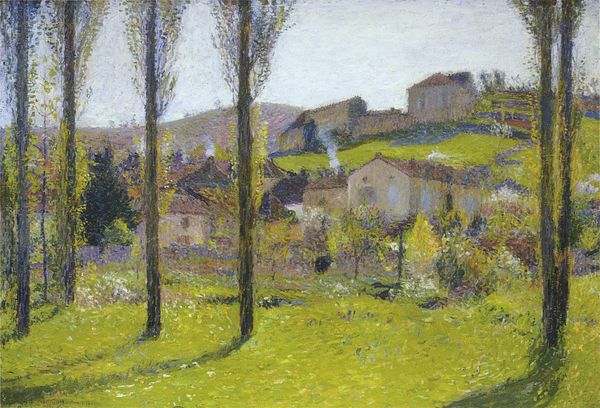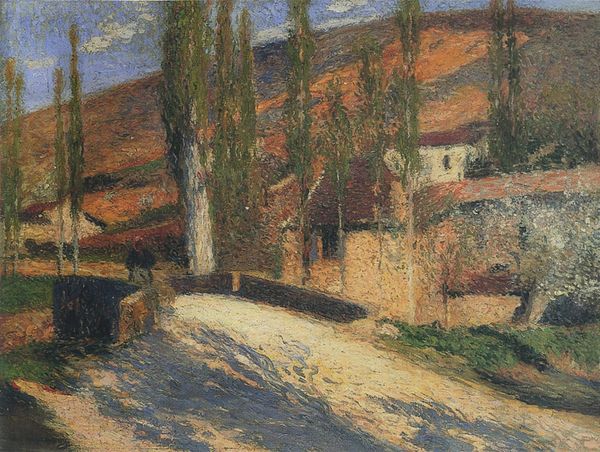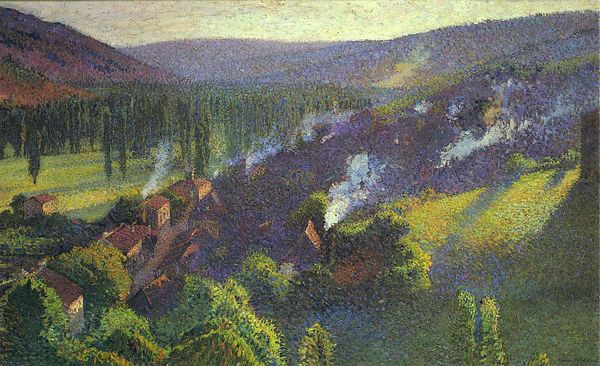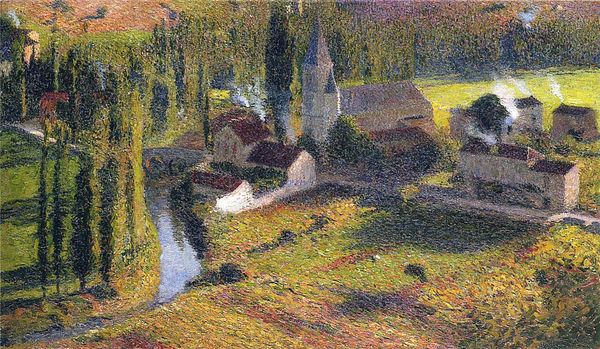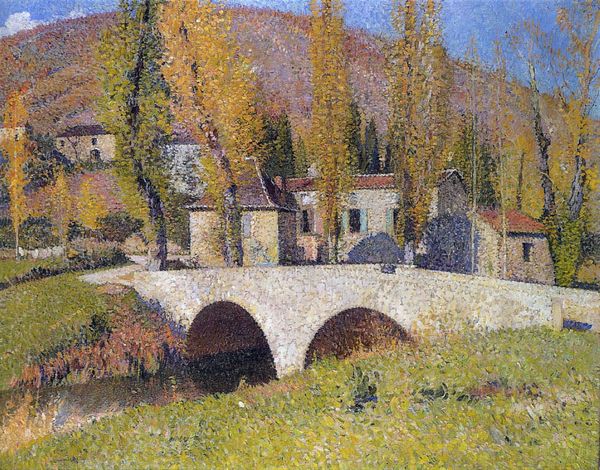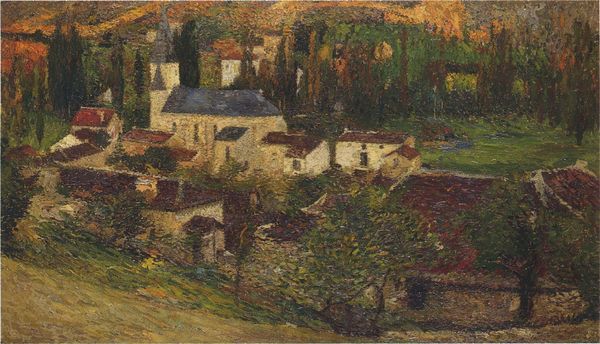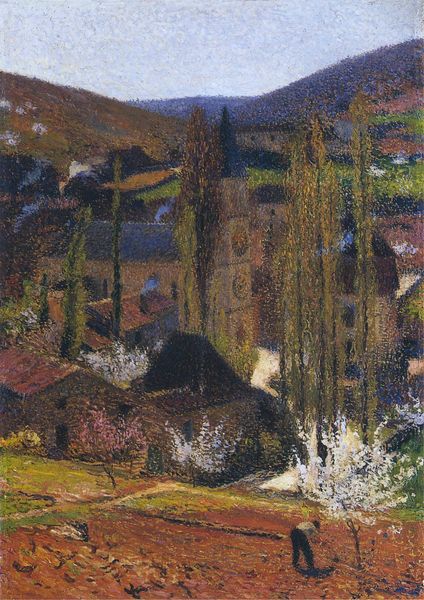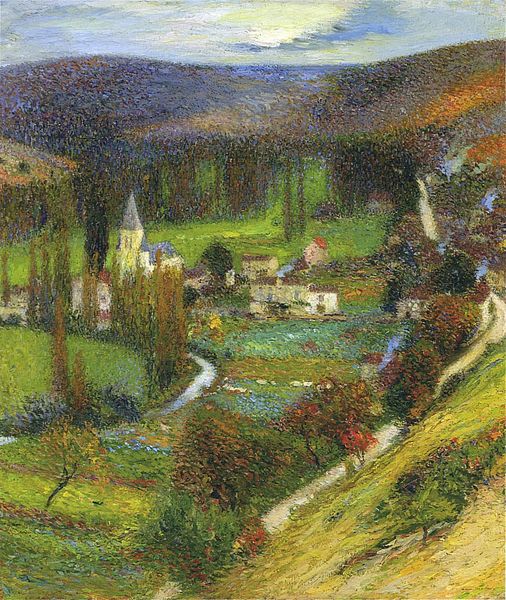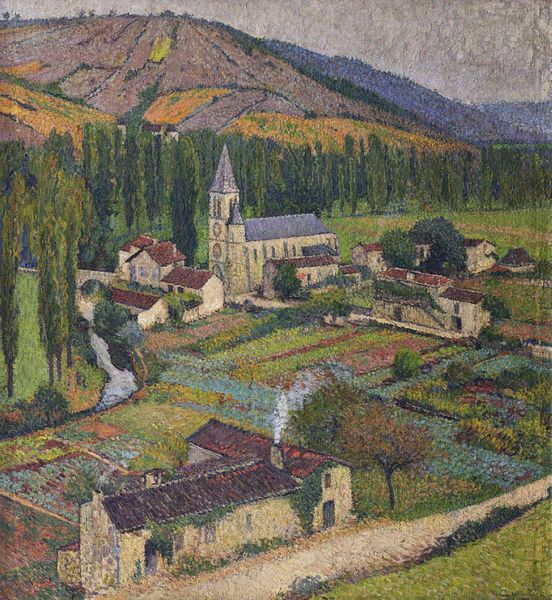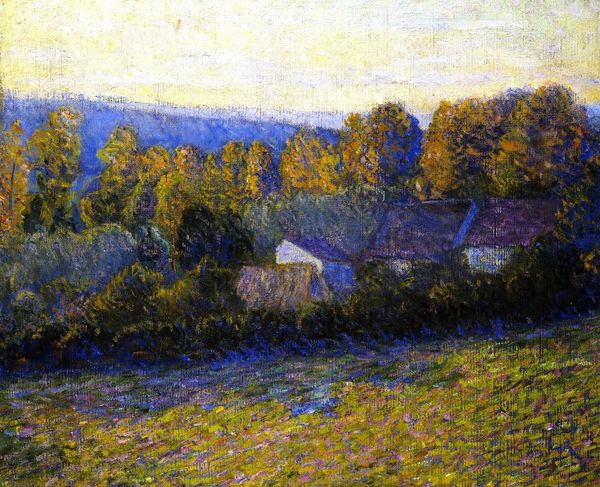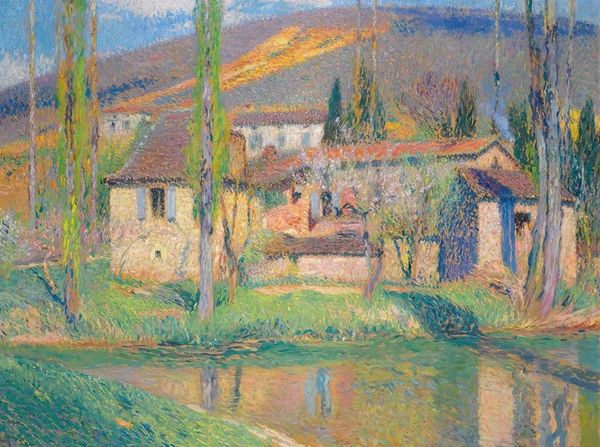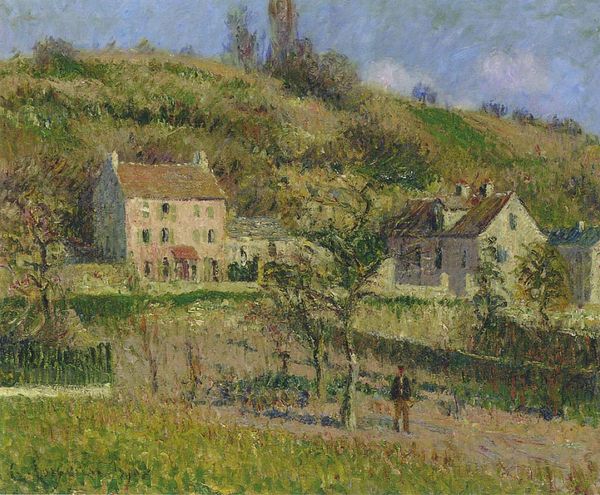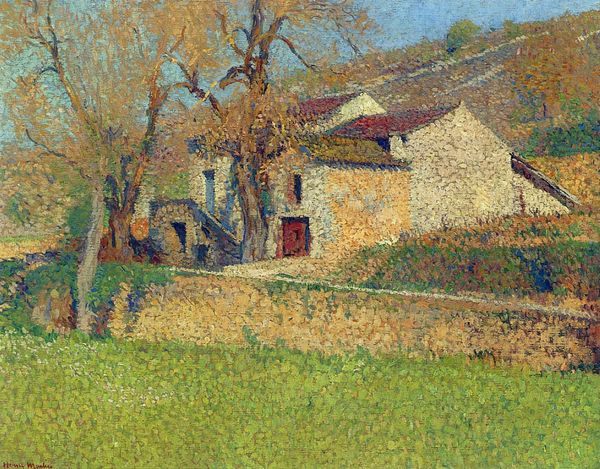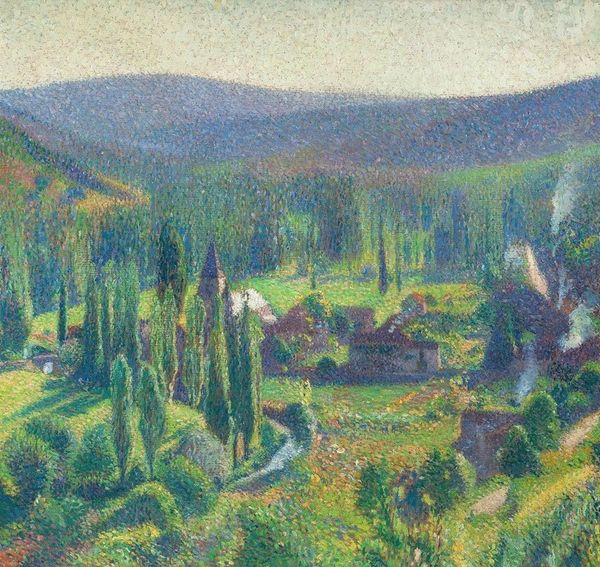
#
tree
#
cliff
#
rural-area
#
countryside
#
waterfall
#
river
#
house
#
impressionist landscape
#
nature
#
oil painting
#
rock
#
forest
#
naturalistic tone
#
seascape
#
nature environment
#
coastline landscape
#
water
#
natural environment
#
watercolor
#
building
Copyright: Public domain
Editor: Henri Martin's "Labastide du Vert" is a landscape of small, soft dabs of color depicting what looks like a French village nestled amongst rolling hills. It gives me a serene and picturesque feeling. What do you make of it? Curator: It is interesting to think about this landscape in terms of production. The visible brushstrokes, this pointillist style, remind us of the artist's labor, the physical act of applying paint to canvas, which transforms raw materials into a commodity. Editor: A commodity? In what sense? Curator: Consider the market for landscapes in Martin's time. Scenes like these appealed to a growing urban class, idealizing rural life even as industrialization transformed the countryside. The very materials of the painting, the pigments, the canvas, the labor – all these were implicated in broader systems of exchange and consumption. Editor: So you’re saying it’s not just a pretty picture, but a product tied to economic forces? Curator: Precisely. And the technique itself – the divisionist approach – further emphasizes the process. The artist isn't just representing the scene; they're also showcasing a particular way of making, a kind of artistic labor that itself became a selling point. Can you think of any artists employing techniques celebrating materiality nowadays? Editor: Perhaps potters whose work foregrounds the raw clay? Or sculptors using reclaimed materials? Curator: Exactly. Artists, through materiality, are reflecting our relationship with the world around us. That’s food for thought, isn’t it? Editor: It certainly is. I hadn't considered the social and economic aspects of the paint itself, which adds another layer to understanding the piece.
Comments
No comments
Be the first to comment and join the conversation on the ultimate creative platform.
